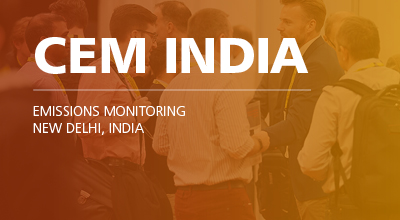

With environmental monitoring as a central theme, an international Conference and Exhibition will take place in New Delhi, 24-26th September 2019. CEM India 2019 will build on the success of a similar event that took place in 2017, with the additional theme of water effluent quality.
“New Indian regulations are affecting the environmental emissions of a wide variety of industries, so there is an enormous demand for information on continuous emissions monitoring technologies, methods and standards,” comments CEM India organiser Marcus Pattison. “Over 700 delegates flocked to CEM India 2017, and with new topics being addressed, we expect CEM India 2019 to be an even larger event.”
The first CEM India event focused on emissions to air, but the 2019 event will also address continuous water effluent quality monitoring systems (CEQMS), so a much wider spectrum of Indian industries will participate.
An international Exhibition will accompany the Conference, providing visitors with an opportunity to see the latest technologies and services from both Indian and international providers. Experts will be available offering help and advice on how to implement cost-effective monitoring, and with most of the world’s leading equipment providers available under one roof, CEM India 2019 will provide a unique opportunity to find the best solutions for visitors’ needs.
As one of the world's fastest growing economies and with the third highest level of carbon dioxide emissions, India has a vital role to play in the fight against climate change and pollution. As a result, a dramatic increase in industrial environmental monitoring is underway, as companies seek to better understand their emissions and demonstrate compliance with the latest regulations.
The themes of the CEM India 2019 Conference have been designed to provide representatives from Indian industries with help and guidance on a range of emissions monitoring related issues including: Regulations, Monitoring Guidelines, Manual and Continuous Emission Monitoring, Calibration and Quality Control, Monitoring Techniques for Key Parameters and Data Management. These presentations will address the most important water quality parameters as well as stack gases, particulates, trace metals, mercury and dioxins. A number of industrial case studies will also be provided.